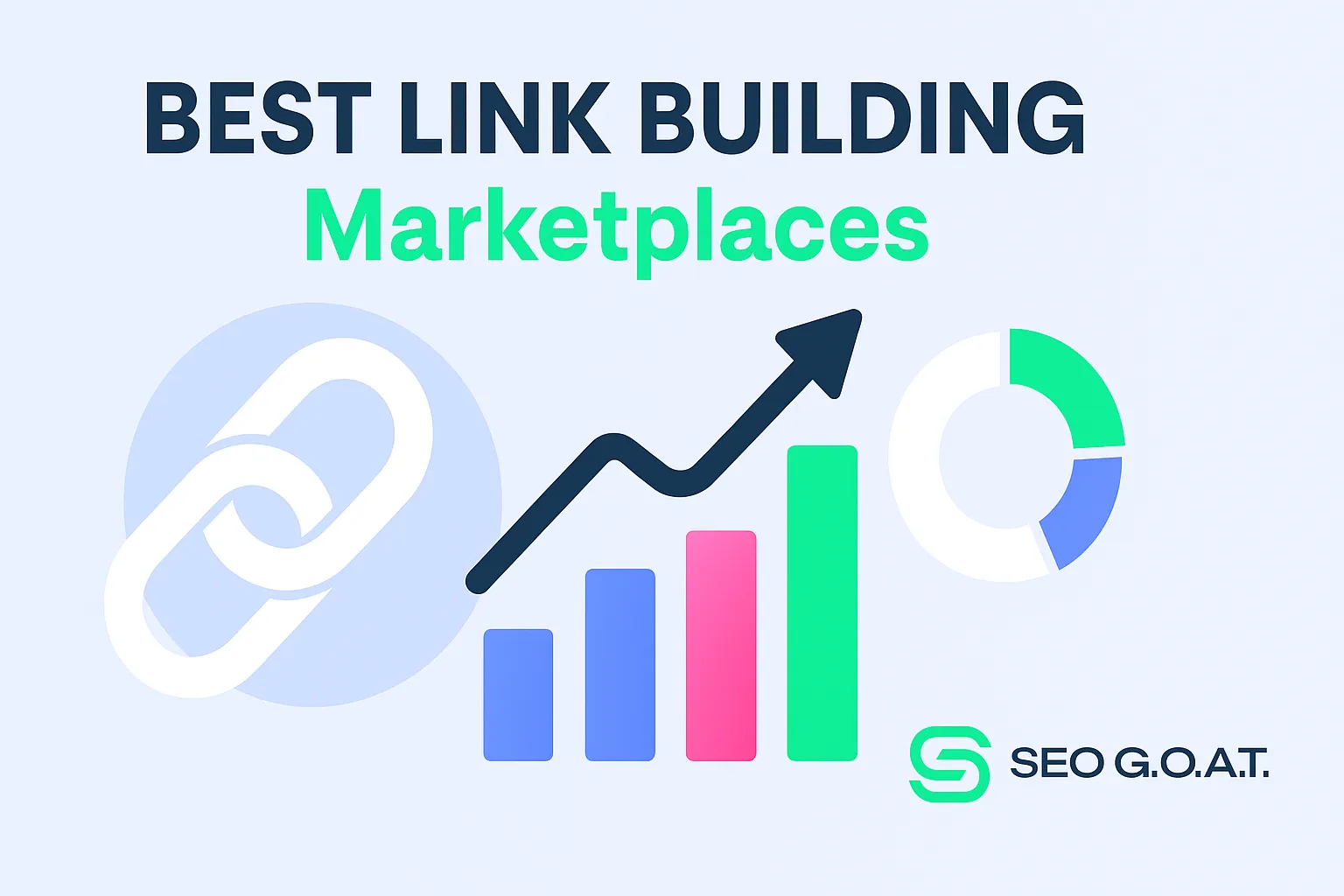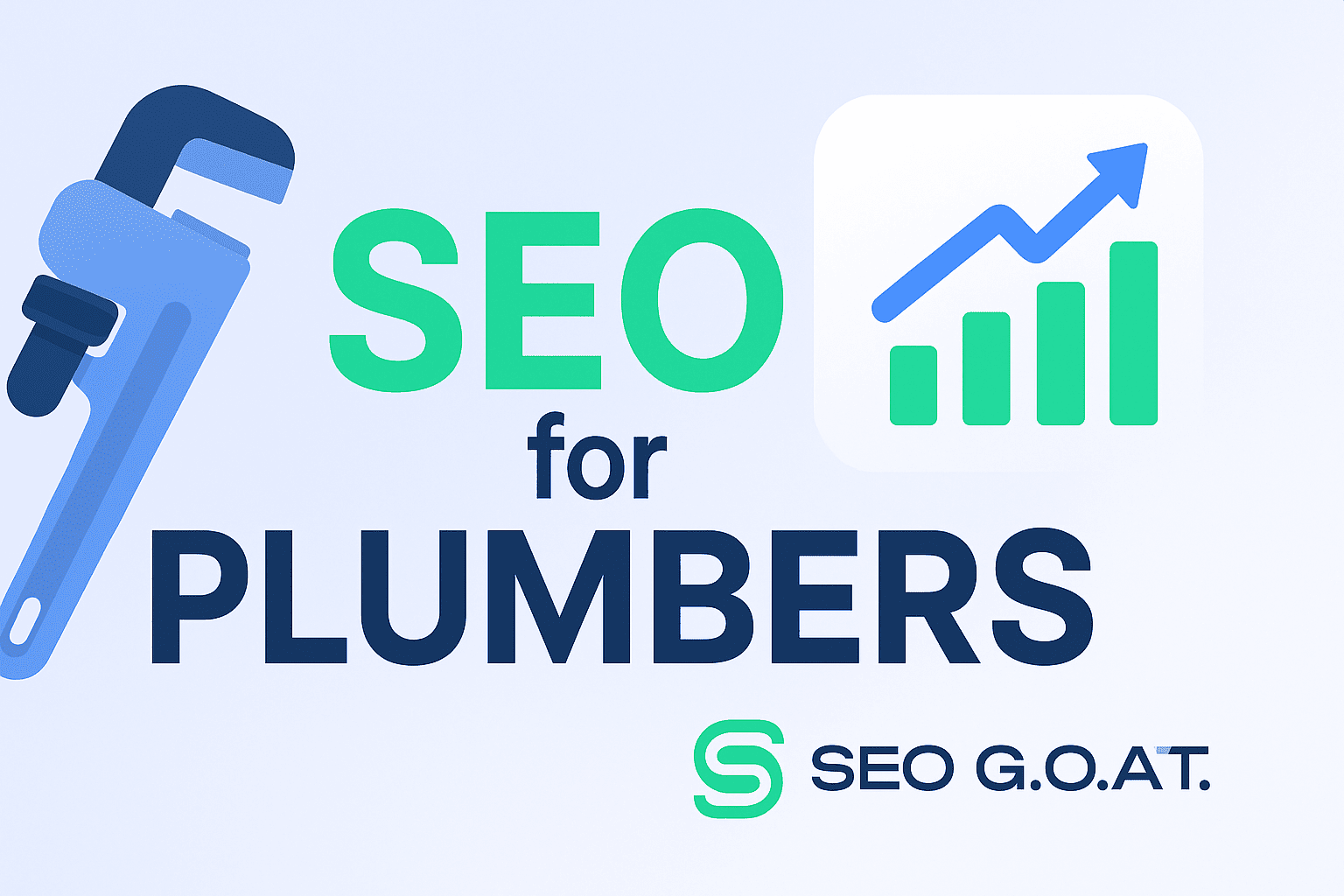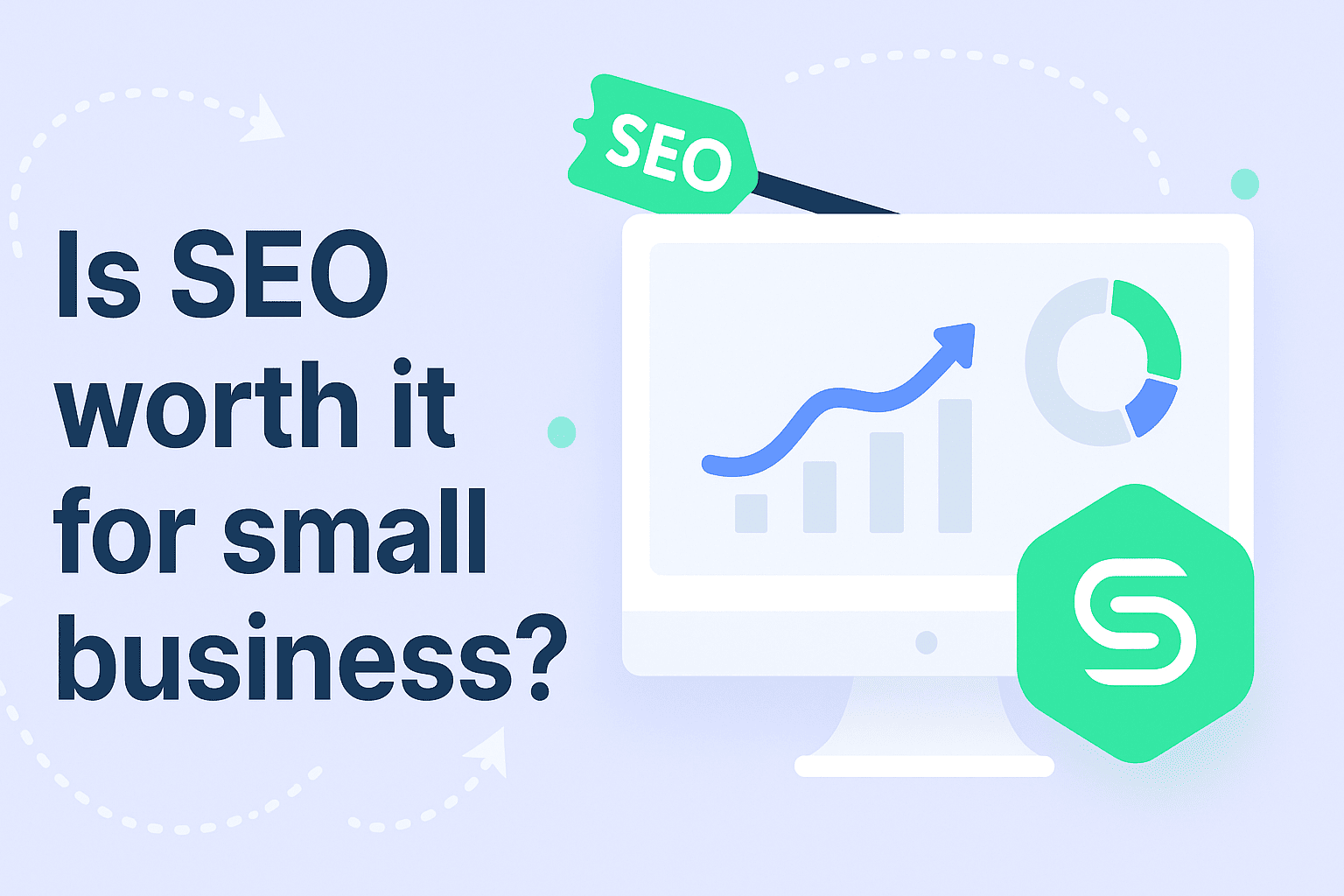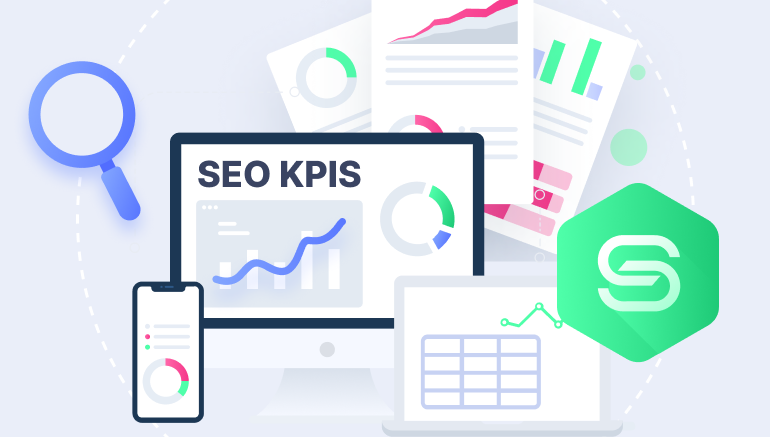9 Basic SEO Principles to Grow Your Website


Less than 1% of people click beyond the first page of Google’s results, so any website must aim to rank within the top results. It may seem to be a challenging task with thousands of websites competing with you in each industry. However, you can easily outplay them by following the basic SEO principles.
Our expert Bohdan Polishchuk shares his 7+ years of experience working with search engine optimization across different aspects. Read on to understand the basic principles of SEO in web development, design, and content writing for your business.
What Are SEO Principles?
Google has hundreds of principles that determine how websites appear in search results. SEO principles are foundational guidelines that optimize a website’s visibility by improving search engine rankings, enhancing user experience, and aligning content with best practices for long-term success.
Understanding these principles is essential if you aim to rank your website higher. It’s also beneficial when partnering with an SEO specialist or agency, allowing you to assess their proposals and understand whether it’s something you really need.
Designers and developers must also understand SEO to provide added value for their clients, creating websites that are both good-looking and well-optimized for search engines. It’s essentially must-have knowledge for anyone working with online content.
9 Basic SEO Principles
Let’s take a closer look at the basic SEO principles that affect your website’s performance and rankings. These are based on our team’s rich experience and Google’s official guidelines.
1. Keyword Research and Integration
Keyword research is the process of identifying the search terms that users type into search engines to find information relevant to your industry or content. Proper keyword research ensures that your website targets the right audience by aligning with the phrases your potential visitors use.
Integrating keywords across your website helps search engines understand the context of your content. Doing this correctly also significantly improves your chances of ranking higher in search results.
Here’s a step-by-step guide on keyword research:
- Identify seed keywords. Start with general topics related to your niche, like “SEO marketing” or “backlink generation”.
- Use keyword tools. The most popular tools are Ahrefs and SEMrush. Use them to determine high-volume keywords with moderate competition.
- Analyze competitors. Check the websites with top-performing keywords and look for gaps that you could use to your advantage.
- Try long-tail keywords. These are keywords with several words like “best backlink agency in Europe 2024”. They have lower competition, but attract more targeted traffic.
- Analyze search intent. Keywords can be informational (how-to guides), navigational (brand searches), or transactional (purchase-related). Align your content with the right intent.
However, your keywords won’t work if they’re integrated incorrectly. You’ll have to follow several best practices, using them all around your website for better results. Check out the sheet below for more details.
| Keyword Integration Best Practices | |
| Where to use | How to use |
| Titles and headers | Include primary keywords in the page title (H1) and subheaders (H2, H3). Search engines prioritize content with well-structured titles that match user queries. |
| Meta tags | Add relevant keywords to meta titles and descriptions to improve visits from search results. Ensure each page has unique meta tags to reflect its specific content. |
| URL | Optimize URLs by including keywords relevant to the page’s topic. If you write about keywords, then use this word in the URL. |
| Content | Distribute keywords naturally throughout the text. Avoid keyword stuffing, which can hurt SEO performance. Use synonyms and related terms to maintain readability and relevance. |
| Image ALT text | Add keywords to image alt attributes to improve accessibility and help search engines understand the image content. |
| Internal links | Use anchor text with keywords to link between related pages within your site, enhancing both user experience and SEO. |
2. User Experience
User experience or UX is the way users can navigate and interact with your website. Google prioritizes websites that provide a smooth, intuitive, and well-planned structure. It leads to longer session durations, lower bounce rates, and higher engagement – all factors that positively impact search rankings.
These are the key elements of user experience for SEO:
- Page load speed. Faster loading times improve rankings and user satisfaction. The industry’s norm is considered to be under 3 seconds. Check your load times with Google PageSpeed Insights.
- Mobile-friendliness. Google’s mobile-first indexing policy prioritizes your website’s mobile version, so you must ensure it has a responsive design and readable content.
- Easy navigation. Users must be able to find what they need without frustration, so you need a clear menu structure and logical page hierarchy. Breadcrumbs are a great way to navigate users.
- Clear CTAs. Guide users across your website’s pages and services with clear and visible CTAs like “Contact us” or “Sign up now” to increase conversions.
- User-centered design. Use heatmaps or session recordings with tools like HotJar to understand user behavior and refine the design accordingly.
A high-quality UX increases session duration, decreases bounce rates, and boosts pageviews. All these are factors that positively impact your website’s metrics and show search engines that it has value for users.
3. Meta Tags
Meta tags are snippets of code that provide information about a web page to search engines and users. Although they do not appear directly on the page, meta tags play a crucial role in SEO by helping search engines understand the page’s content. Properly optimized meta tags can improve visibility and CTRs.
| Types of Meta Tags Important for SEO | |
| Meta Title | Defines the page’s title, which appears as a clickable link in search engine results; Each title must be up to 60 characters, contain keywords, and reflect the page’s content; Example: “Best SEO Practices for Your Website”. |
| Meta Description | Provides a brief summary of the page, up to 160 characters; Doesn’t impact rankings, but influences CTRs; Example: “Discover 9 essential SEO tips to boost your website’s visibility and drive organic traffic.” |
| Meta Keywords | Were mostly relevant in the past, used to specify relevant search terms for a page; Aren’t prioritized by Google anymore. |
| Robots Meta Tag | Instructs search engines on how to handle the page: index, follow links, etc. Example: <meta name=”robots” content=”index, follow” /> ensures the page is indexed and its links are crawled. |
Ahrefs has a free title generator that uses AI to provide dozens of options based on your core keyword. The best practices include adding relevant keywords, making unique titles & descriptions for each page, and optimizing their readability.
4. Sitemap
A sitemap is a structured list of all the important pages on your website, designed to help search engines discover, crawl, and index them efficiently. It acts as a roadmap, guiding search engine bots through your website’s structure.
There are two main types of sitemaps:
- XML sitemaps (used for search engines)
- HTML sitemaps (for human visitors).
Including a well-organized sitemap ensures that all key content on your website is visible to search engines, which improves indexing and SEO performance.
These are the best practices for creating a sitemap:
- Include only important pages. Add URLs for all key pages: product pages, blog posts, and service pages. Avoid duplicates and non-canonical pages.
- Keep it updated. Ensure your sitemap is updated regularly when you add, remove, or modify pages. An up-to-date sitemap ensures search engines have access to the latest content.
- Link to the sitemap in Robots.txt. Include the URL to your XML sitemap in your robots.txt file to guide search engines to crawl it efficiently.
- Submit the sitemap to Google Search Console. Submitting your sitemap through Google Search Console helps search engines detect new pages faster and track indexing status.
- Limit the size of the sitemap. Keep the XML sitemap size under 50 MB or 50,000 URLs. For larger websites, split the sitemap into multiple files and use an index sitemap to link them together.
A well-maintained sitemap is essential for improving your site’s visibility on search engines. It provides search engines with a clear structure of your website, ensuring they can index your pages effectively and helping your website perform better in search rankings.
5. Robots.txt File
A robots.txt file controls which pages search engines can crawl, preventing access to irrelevant or sensitive content. Properly configuring the robots.txt file improves your website’s crawl efficiency and prevents indexing of unnecessary content that could dilute your SEO efforts.
How the Robots.txt file works:
- When a search engine crawler visits your website, it first looks for the robots.txt file to see which pages it is allowed to crawl.
- The file provides allow and disallow directives, guiding crawlers on what content to access.
- However, not all bots respect the robots.txt rules, so sensitive information should be secured using other methods, such as password protection.
These are the best practices for Robots.txt configuration:
- Block non-essential pages. These include private pages, duplicate content, and irrelevant sections like admin areas.
- Don’t block critical resources. This includes CSS, JavaScript files, and others. Blocking them can negatively impact the way search engines render your website.
- Link to your sitemap. Always add a reference to your XML sitemap in the robots.txt file to help search engines discover and index your content more effectively.
- Test Your Robots.txt file. Use tools like Google Search Console’s robots.txt Tester to ensure your rules are working as expected and that no important pages are accidentally blocked.
Properly configuring your robots.txt file ensures that search engines focus on the most valuable pages, improving your website’s SEO performance. Regularly review and update the file to reflect any changes to your website’s structure or content.
6. Internal Linking
Internal linking means linking one page of your website to another within the same domain. It helps visitors and search engines find content more efficiently. Internal links create pathways for search engine crawlers to navigate your website, while also directing users to relevant information.
| Types of Internal Links | |
| Navigation Links | Found in menus, sidebars, and footers to help users browse important sections of the website. |
| Contextual Links | Embedded within the content of a page to connect users to related articles or relevant information. |
| Footer Links | Provide access to essential pages like contact information, privacy policies, or terms and conditions. |
These are the best SEO practices for internal linking:
- Use descriptive anchor text. Anchor text should clearly indicate what the linked page is about. Avoid using generic phrases like “click here” or “read more.”
- Ensure links are relevant. Link only to pages that are contextually relevant to the content. This improves the user journey and keeps visitors engaged.
- Distribute link equity. Internal links pass “link juice,” or ranking value, from one page to another. Link from high-authority pages to less visible ones to improve their visibility.
- Create a clear structure. Use internal linking to establish a hierarchy. Important pages should be linked from multiple sections of the website, ensuring they are easily accessible.
- Avoid overlinking. Too many internal links on a single page can confuse both users and search engines. Use internal links thoughtfully to avoid overwhelming readers.
Here’s an example: if you write about internal links, you might want to share the importance of link building with your readers. Adding a link to a relevant article will be beneficial.
7. Content Quality
According to Google’s guidelines, high-quality content must be helpful, reliable, and people-first. It engages users and builds trust, helping them find meaningful information and demonstrate to search engines that you’re a reliable resource.
| Key Elements of High-Quality Content | |
| Relevance and Usefulness | Content should address the audience’s needs and provide practical value through information, entertainment, or solutions to their problems. |
| Originality and Uniqueness | Avoid duplicate content or rephrasing material from other sources. Original content is prioritized by search engines and builds credibility with readers. |
| Comprehensive and Well-Researched | In-depth articles that thoroughly explore a topic rank better and provide more value to readers. Include data, statistics, or case studies where relevant. |
| Readability and Structure | Use headings, subheadings, bullet points, and short paragraphs to make content easy to read and skim. |
| Organic Keywords | Keywords should fit organically within the content. Keyword stuffing can harm readability and SEO. |
| Accuracy and Authority | Cite credible sources for facts or data, and ensure the information is up-to-date. Authoritative content builds trust with both users and search engines. |
Considering the outburst of AI tools, it’s also worth noting that you may only use them as a helping hand in creating your content. Google Search’s guidelines clearly state that only high-quality content will be rewarded, regardless of the way it’s made. That’s why you should never copypaste AI content.
8. Backlinks
Backlinks are inbound links from one website to another. Search engines treat backlinks as votes of confidence, signaling that other websites find your content valuable and trustworthy. The more high-quality backlinks your site earns from reputable sources, the better your website’s authority and search rankings.
| Types of Backlinks | |
| Natural Backlinks | Earned organically when other websites link to your content because they find it helpful or authoritative. |
| Outreach Backlinks | Acquired through deliberate efforts, such as guest posting or outreach to websites to request backlinks. |
| Editorial Backlinks | Given by websites when they cite your content as a resource in their articles. |
| Nofollow vs Dofollow Backlinks | Dofollow: passes link equity (ranking power) from the referring site to your website. Nofollow: instructs search engines not to pass link equity, though these links can still bring referral traffic. |
SEO G.O.A.T.’s team has been working with backlinks since 2020. Many of our experts have 7+ years of experience in this industry, so here are some best practices based on our expertise:
- Quality is better than quantity. Backlinks from authoritative websites with a high DR and DA are the most valuable ones, bringing maximum benefits for your website.
- Create link-worthy content. This includes infographics, reports, statistics, how-to guides, and other types of content that is easily shared online.
- Use guest posting. We consider guest posting to be the most effective link building strategies, allowing you to place a link on another website and share your expertise.
- Avoid spammy backlinks. Links from low-quality, irrelevant, or spammy sites can harm your SEO. Learn how to disavow backlinks in our previous article.
- Monitor backlinks. Use tools like Google Search Console, Ahrefs, or SEMrush to track and analyze your backlinks, ensuring their quality and relevance over time.
Backlinks remain a fundamental component of effective SEO strategies. Building a strong & diverse backlink profile takes time and effort but is essential for boosting your website’s visibility, authority, and long-term success in search rankings.
9. Google Search Console & Analytics
Google Search Console and Google Analytics are essential tools for monitoring and improving your website’s SEO performance. They provide valuable insights into how search engines and users interact with your website. This helps you identify technical issues, track traffic sources, and optimize content based on real-world data.
Here are the key features for Google Search Console:
| Google Search Console: Key Features and Uses | |
| Performance Reports | Track your website’s impressions, clicks, and average position in Google search results.Identify which keywords bring the most traffic and optimize content accordingly. |
| Index Coverage | Monitor the status of your website’s pages to ensure they are properly indexed.Fix errors like 404s and crawling issues to prevent ranking penalties. |
| URL Inspection Tool | Check if a specific page is indexed by Google and troubleshoot issues if it’s not.Request indexing for newly published pages to speed up visibility. |
| Sitemaps Submission | Submit XML sitemaps to help Google crawl and index your site efficiently. |
| Mobile Usability Reports | Identify and fix mobile usability issues that could impact search rankings. |
| Security Issues and Manual Actions | Get alerts about security problems or manual actions imposed by Google that could affect your rankings. |
Here are the key features of Google Analytics:
| Google Analytics: Key Features and Uses | |
| Traffic Analysis | Track the number of visitors, their geographic location, and the devices they use.Identify which pages attract the most traffic and how users navigate your website. |
| Behavior Reports | Analyze user behavior, session duration, bounce rates, and pageviews.Identify which pages users exit from to improve engagement. |
| Acquisition Reports | Monitor traffic sources (organic search, direct, social media, referrals) to understand where visitors come from. |
| Conversion Tracking | Set up goals and track user actions, like sign-ups, downloads, or purchases, to measure the effectiveness of your marketing efforts. |
| Audience Segmentation | Segment visitors based on behavior, demographics, or traffic source to tailor content and campaigns more effectively. |
Google Search Console and Analytics are indispensable for managing a successful SEO strategy. You can achieve sustainable growth in traffic and performance by using both tools effectively. That’s why it’s one of the basic SEO principles to set up both tools from the very beginning.
SEO Principles in Web Development
From a web development perspective, creating a properly optimized website is crucial for SEO success. A well-structured & technically sound site ensures that search engines can crawl, index, and rank it efficiently, providing a solid foundation for SEO.
- Optimize Performance.
- A fast-loading website improves user experience and search rankings. Developers should aim to achieve the highest possible score on Google PageSpeed Insights by minimizing code, compressing images, and reducing unnecessary plugins or scripts.
- Conduct Regular SEO Audits.
- Running the website through free SEO audit tools (Screaming Frog or Ahrefs Webmaster Tools) helps identify errors like broken links, missing meta tags, and slow-loading pages. Addressing these issues keeps the site SEO-friendly.
- Control Indexing with Robots.txt and Meta Tags.
- Developers should block irrelevant pages from being indexed, such as search filters or pagination URLs with parameters. However, we recommend consulting an SEO expert to avoid accidentally hiding valuable content.
- Maintain a Clean Codebase and Website Structure.
- Use semantic HTML and a logical site hierarchy to make it easier for search engines to crawl the website. Proper use of heading tags helps convey the page’s topic clearly.
- Ensure Mobile-Friendliness
- With Google’s mobile-first indexing, the website’s mobile version must be fully optimized to provide a smooth experience across devices. Responsive design ensures users have the same experience on desktops and mobile phones.
A strong partnership between web developers and SEO specialists ensures the website remains optimized for both performance and visibility, maximizing its potential in search engine rankings.
SEO Principles in Web Design
Your website’s design also plays a significant role in SEO by improving its UI/UX, directly impacting rankings and user satisfaction. The better the experience, the more likely people are to stay on the website. This leads to higher rankings in the SERPs.
Enhancing User Experience (UI/UX)
Using an intuitive and well-organized design keeps users engaged by making it easy for them to find information. Clear menus, readable fonts, and attractive layouts improve the overall experience. The positive experience makes it more likely for them to spend more time on the website, increasing session duration and engagement. This sends a positive behavioral signal to search engines.
Avoiding Hidden SEO Content
All text and important elements must be fully visible and accessible to users. Search engines penalize websites that try to manipulate rankings by hiding content. A perfect example is white text on a white background.
Ensure the content is presented naturally. For example, if keywords are integrated into the design, they should be part of visible content, not hidden or disguised. Accessible design is also essential for users with disabilities. Use proper labels and alt text to ensure everyone can interact with your website.
Limiting Heavy Animations
While animations can make the website visually appealing, overuse can harm load speed and performance, leading to a negative impact on SEO. Slow websites tend to have higher bounce rates and lower engagement.
Lightweight & minimal animations (hover effects or simple transitions) are recommended to maintain performance while adding visual appeal. Compress media files and use animations selectively to strike a balance between aesthetics and usability.
Breadcrumb Navigation
Breadcrumbs are a secondary navigation aid that helps users understand their current location on the website. They also allow visitors to easily backtrack to previous pages without using the main menu.
Breadcrumb navigation provides SEO benefits by improving internal linking, which helps search engines understand the hierarchy and structure of your content. Properly designed breadcrumbs enhance usability by showing users the context of their current page, especially on complex websites with multiple categories and subcategories.
Mobile Version Optimization
With Google’s mobile-first indexing, the search engine primarily evaluates the mobile version of your website to determine its rankings. A website that works well on desktop but poorly on mobile can negatively impact your SEO.
Ensure that all essential elements (menus, buttons, and text) are clearly visible and functional on mobile devices. Avoid layouts that require excessive zooming or scrolling.
Use responsive design to ensure your website adapts to various screen sizes, including smartphones and tablets. This will provide a consistent user experience across all devices. Optimized mobile performance also reduces bounce rates and enhances engagement, which improves SEO.
Best Practices by SEO G.O.A.T.
Our guide on the basic SEO principles should help you get a solid foundation to cope with most challenges and start building a well-optimized website. Following these principles also reduces the risks of getting penalized by Google, saving you a lot of money in the future.
However, there are dozens of other factors that you should consider. This guide covers the most common mistakes that you might make. We recommend ordering a SEO audit & consultation from experienced professionals to ensure your website works properly. Book a call with SEO G.O.A.T. to save your time & money by getting high-quality SEO services today!




